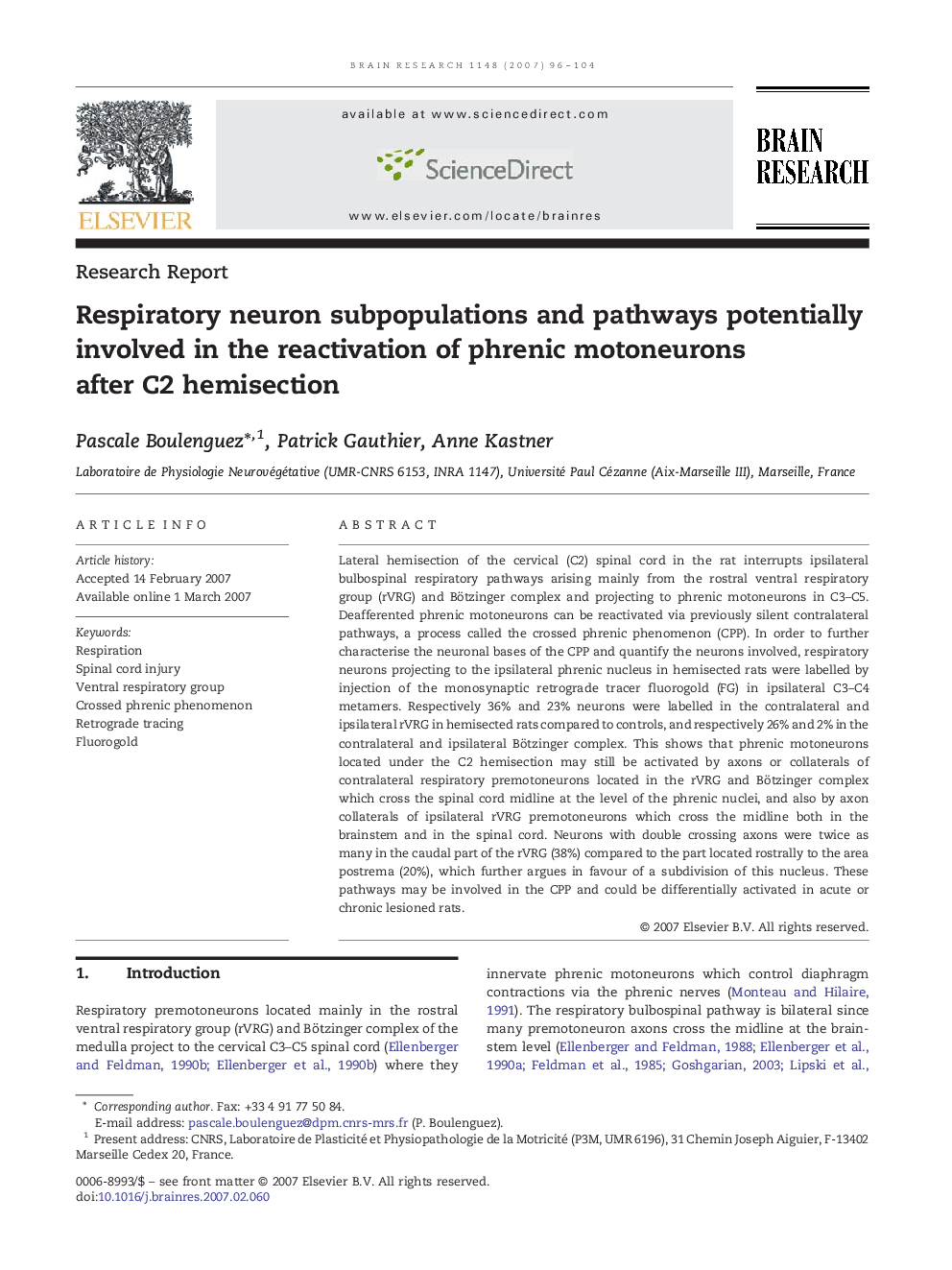| Article ID | Journal | Published Year | Pages | File Type |
|---|---|---|---|---|
| 4331331 | Brain Research | 2007 | 9 Pages |
Abstract
Lateral hemisection of the cervical (C2) spinal cord in the rat interrupts ipsilateral bulbospinal respiratory pathways arising mainly from the rostral ventral respiratory group (rVRG) and Bötzinger complex and projecting to phrenic motoneurons in C3-C5. Deafferented phrenic motoneurons can be reactivated via previously silent contralateral pathways, a process called the crossed phrenic phenomenon (CPP). In order to further characterise the neuronal bases of the CPP and quantify the neurons involved, respiratory neurons projecting to the ipsilateral phrenic nucleus in hemisected rats were labelled by injection of the monosynaptic retrograde tracer fluorogold (FG) in ipsilateral C3-C4 metamers. Respectively 36% and 23% neurons were labelled in the contralateral and ipsilateral rVRG in hemisected rats compared to controls, and respectively 26% and 2% in the contralateral and ipsilateral Bötzinger complex. This shows that phrenic motoneurons located under the C2 hemisection may still be activated by axons or collaterals of contralateral respiratory premotoneurons located in the rVRG and Bötzinger complex which cross the spinal cord midline at the level of the phrenic nuclei, and also by axon collaterals of ipsilateral rVRG premotoneurons which cross the midline both in the brainstem and in the spinal cord. Neurons with double crossing axons were twice as many in the caudal part of the rVRG (38%) compared to the part located rostrally to the area postrema (20%), which further argues in favour of a subdivision of this nucleus. These pathways may be involved in the CPP and could be differentially activated in acute or chronic lesioned rats.
Keywords
Related Topics
Life Sciences
Neuroscience
Neuroscience (General)
Authors
Pascale Boulenguez, Patrick Gauthier, Anne Kastner,
